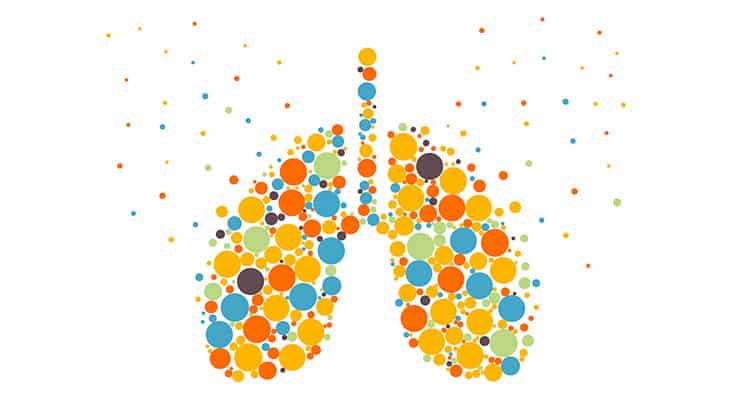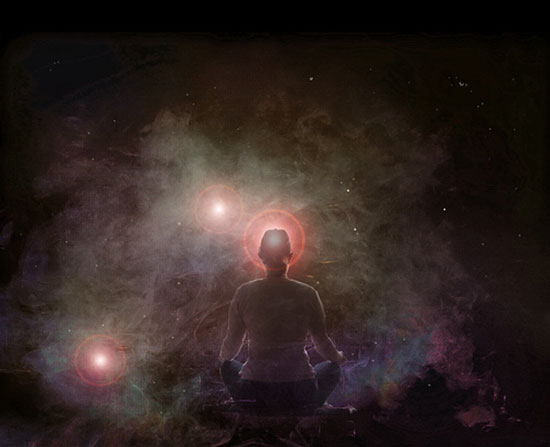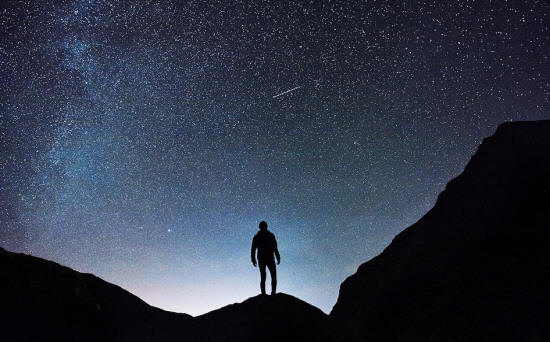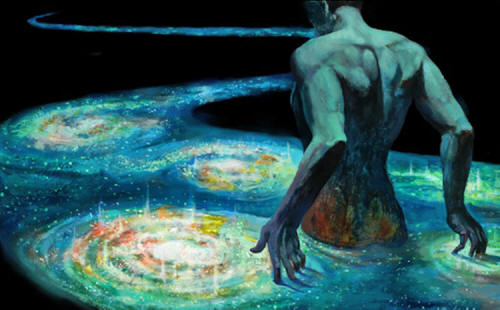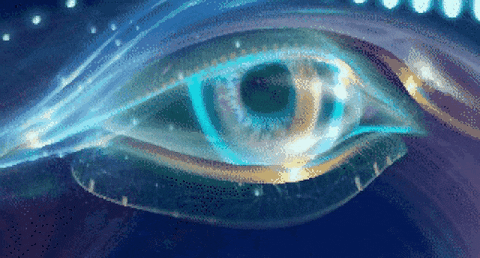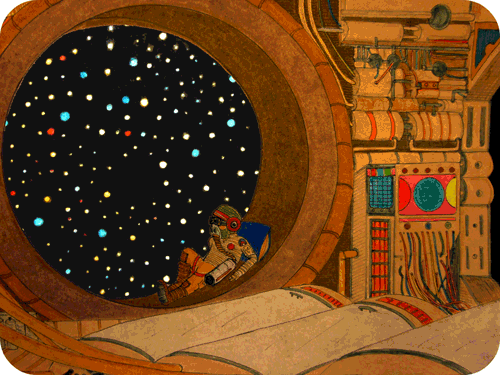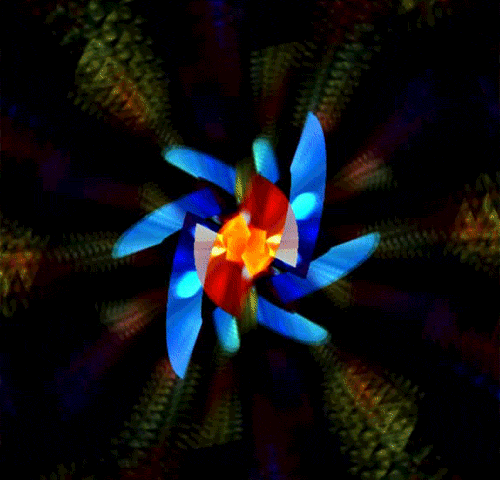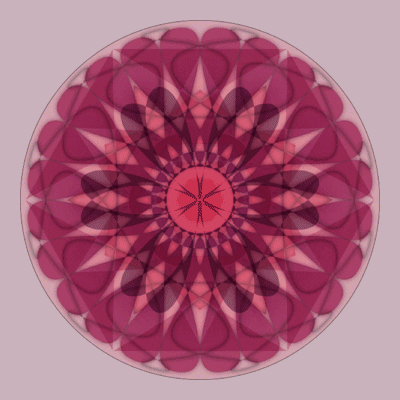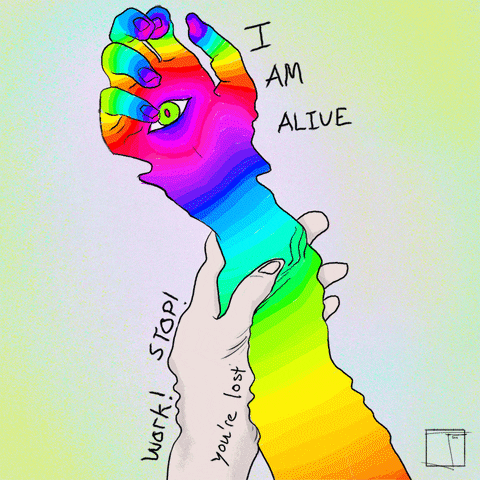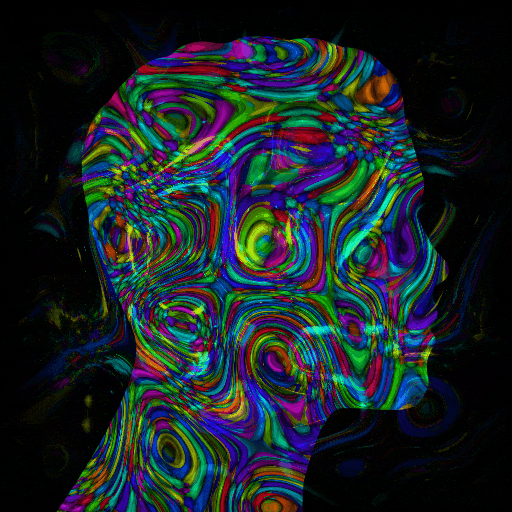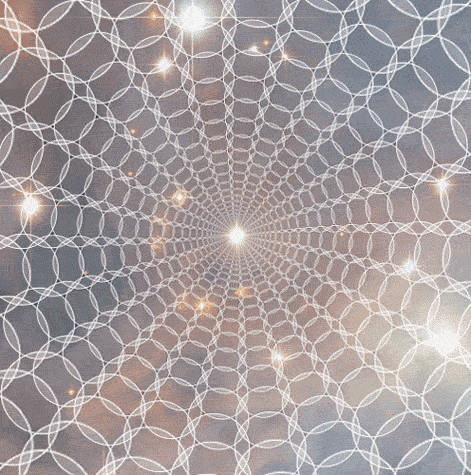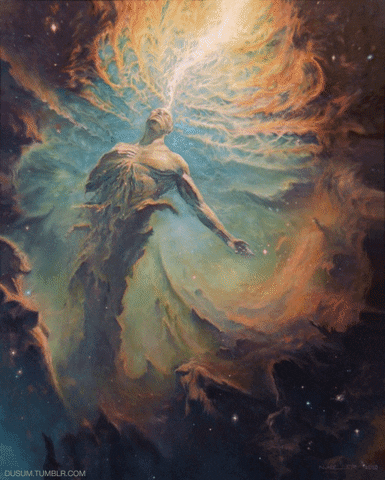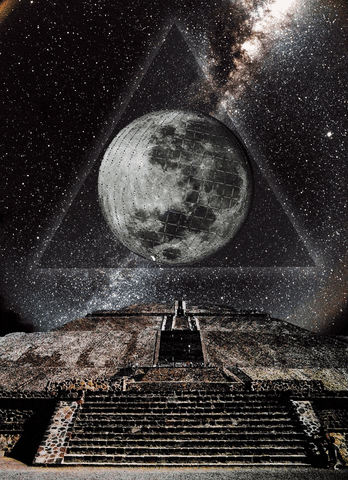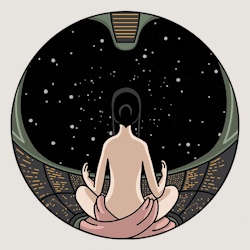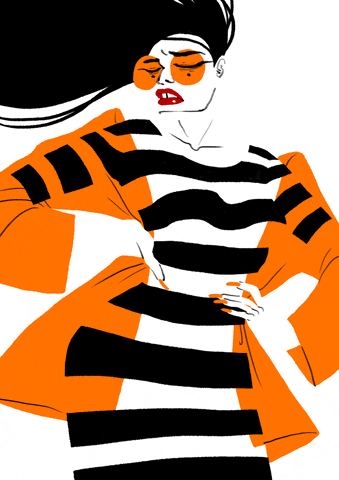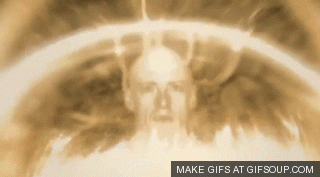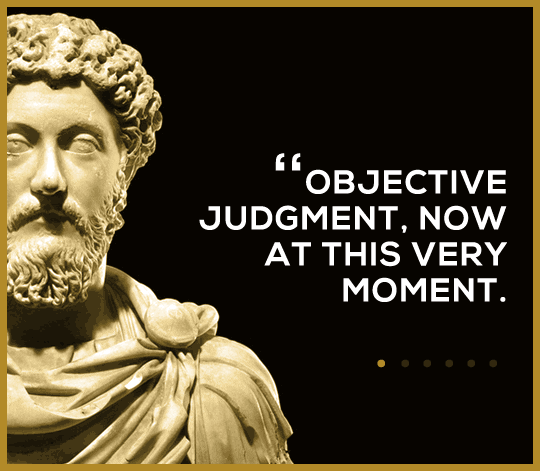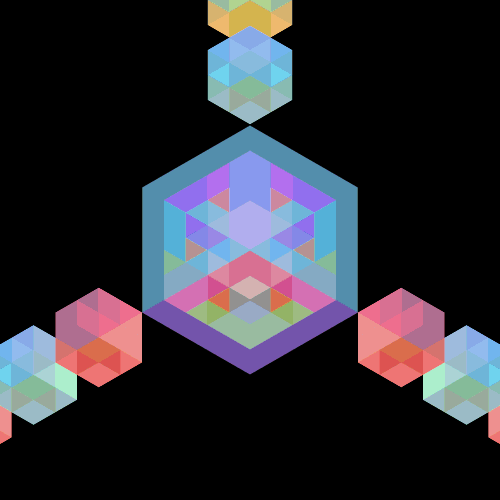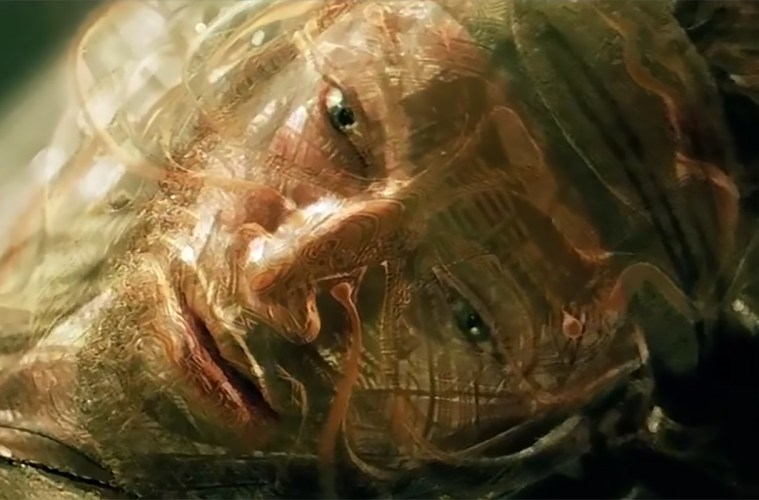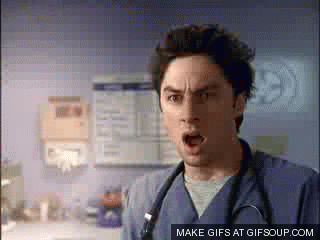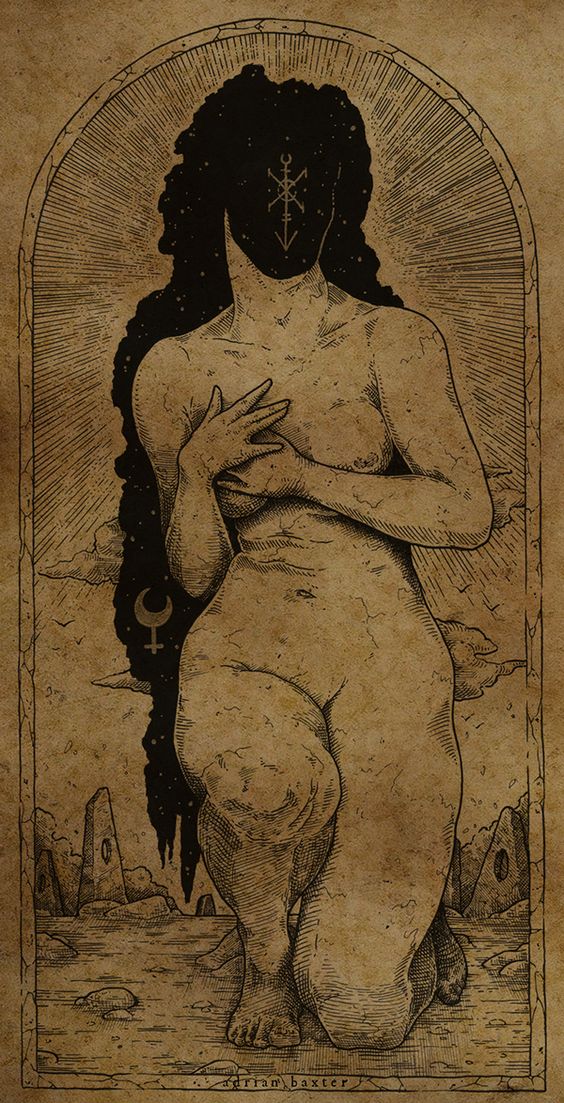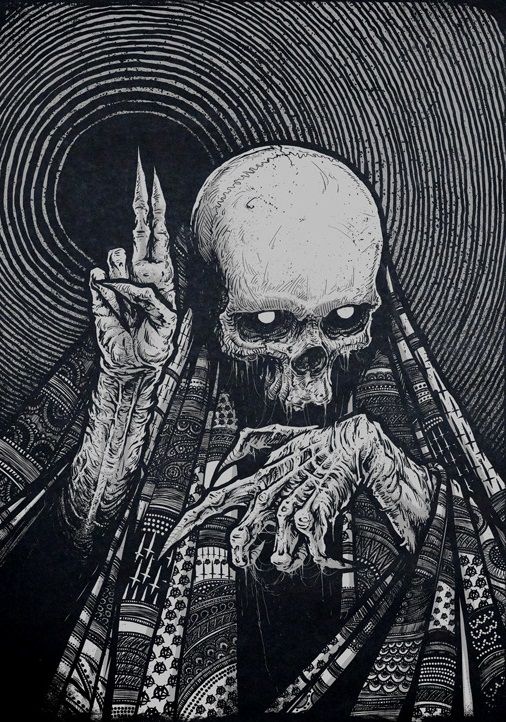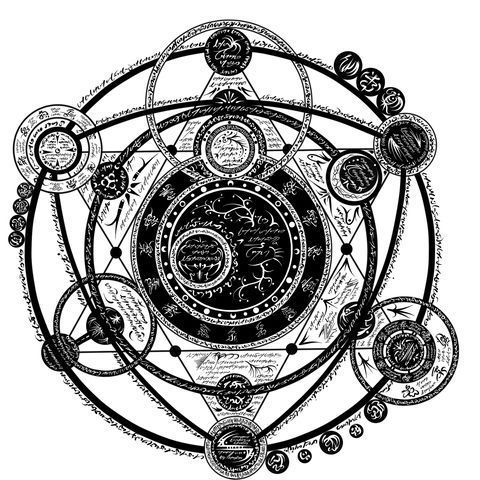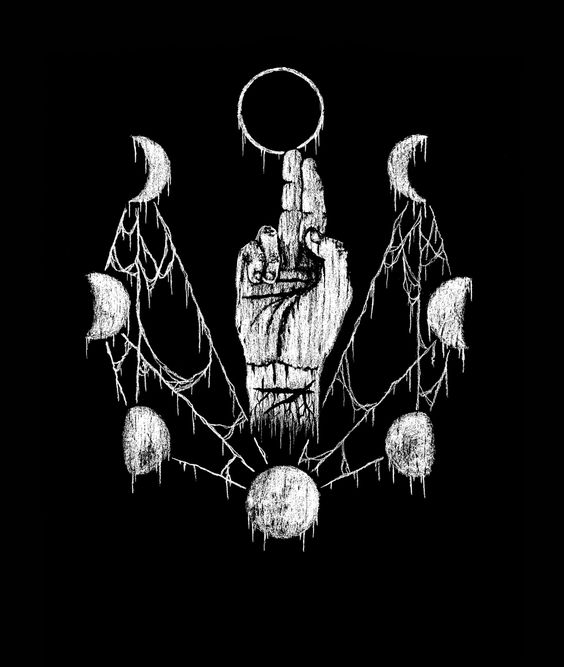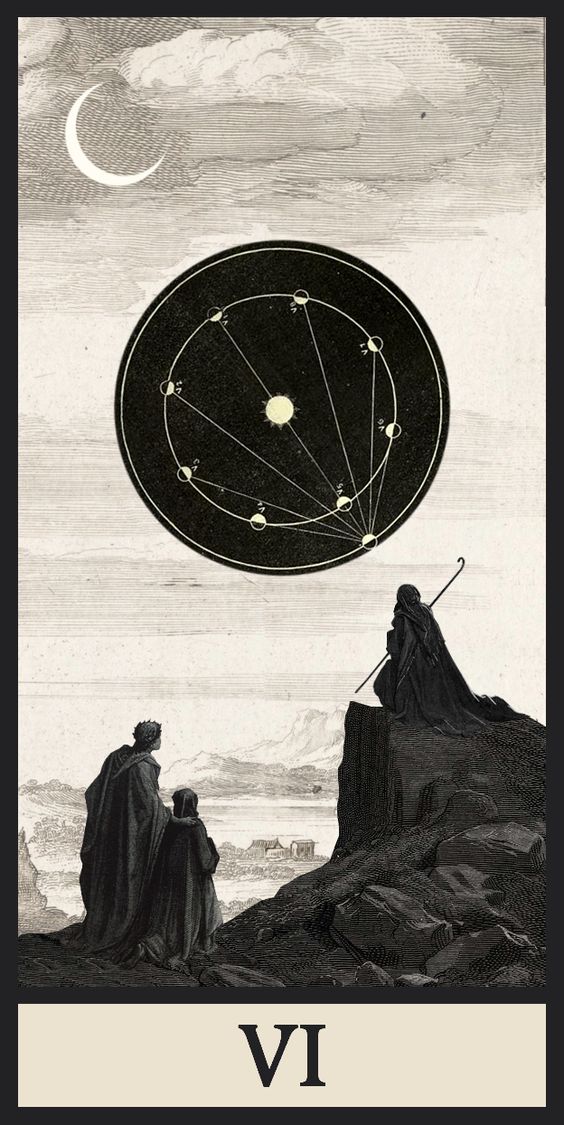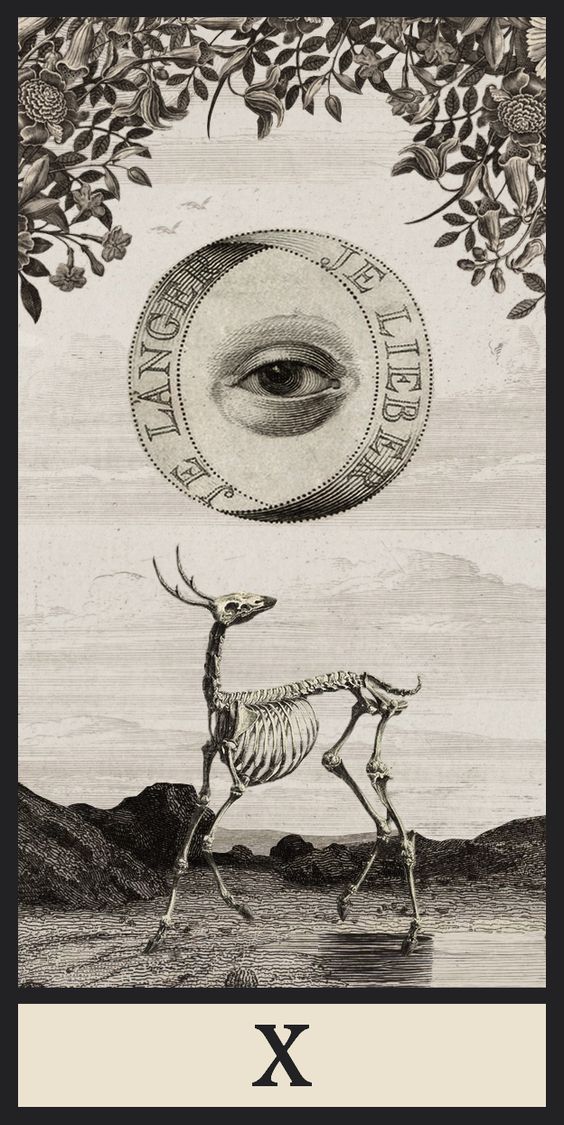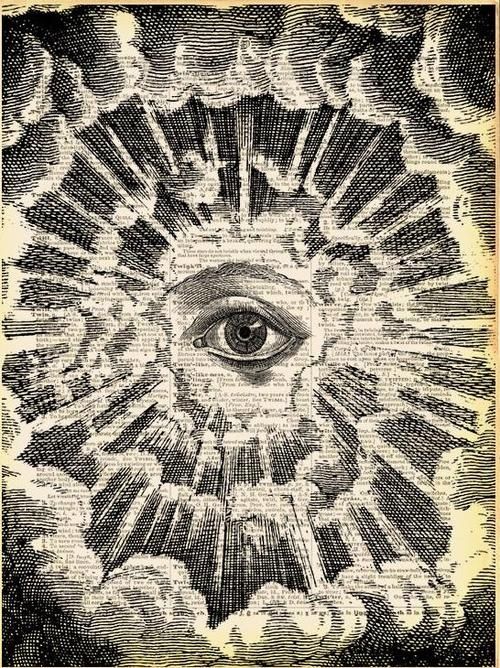Consciousness
~ The Beginning and the End ~
by
Michael Grosso
MICHAEL GROSSO studied classics and received his Ph.D. in philosophy from Columbia University.
Formerly a philosophy teacher at City University of New York and the City University of New Jersey, he is now affiliated with a research group at the Division of Perceptual Studies of the University of Virginia.
Recent books include Experiencing the Next World Now and (co-authored) Irreducible Mind: A Psychology for the 21st Century.
Presently at work on a book, Wings of Ecstasy: The Story of Joseph of Copertino, his main interest is in consciousness studies.
Grosso is also a painter.
He can be contacted via email at
Grosso.michael@gmail.com.
Nothing is more certain than the fact that we are conscious.
And yet there is something very puzzling, even uncanny, about being conscious; and the learned talk of the mystery of consciousness.
The mystery centers around the origin of consciousness; the prevailing scientific view is that consciousness is a property that emerges from complex brains.
The problem is that we haven't the foggiest idea of how the stuff of our minds could conceivably come forth from anything physical.
Bits of electrified meat don't easily translate into episodes of consciousness - we have it, we know it, in some sense we are it - but what it is and where it came from escapes us.
There is also a mystery about the future of consciousness - I mean for each one of us there is the mystery of what comes after death.
There's no easy answer to the 'after' question, but I will offer my opinion, based on my own experience and research.
We might begin by saying that the imagination of the human race is clearly in the affirmative about the ongoing journey after death.
The mythic consensus is that consciousness continues after death, and does so in many forms and styles; accounts are recorded in the history of religion and poetry and more recently in the annals of psychical research.
No doubt individuals have always had their private views and hunches on the great mystery.
But a crucial turn of events took place in the seventeenth century; the scientific revolution began to overthrow the entire mythical worldview of humanity with its instinctive sense of gods and souls and spirits.
The sky was disrobed of its divinity and turned into meaningless emptiness; according to Leopardi's Story of the Human Race, all the illusions of the imagination were exposed and a great void of meaning settled down triumphantly in their place.
Our consciousness, the new prophets of reductive materialism declared, will vanish with the brain's entropic rot.
Are we really forced into this worm's-eye view of reality?
People generally go along with the stories, rites, and customs for dealing with death that they inherit.
But some break free and think for themselves.
Some are exposed to modern scientific ideas (possessed by the conceits of reductive materialism) and the idea of another world starts to seem unreal.
And yet, our views (apart from fashion) continually change in the face of new and unexpected experiences.
So how we view death and the fate of our consciousness is sometimes based on the kinds and intensities of experience we have.
For example, I am at least open to the idea of something going on after death because of some odd experiences I've had (for an account of some of these, see my
Soulmaking [1997] Hampton Roads: Charlottesville, VA.)
A person who has had an unusual experience is likely to be more receptive to the idea of postmortem survival.
Of course, one might have such a vivid encounter, and still in the end dismiss it as some seductive delusion.
Others, on the other hand, may embrace great cosmic schemes on the basis of trivial coincidences.
I have come to form my own view based on my experiences and my own thinking.
My attitude toward this question of life after death is slightly odd.
Three times I had encounters that were clear evidence for something smacking of survival, (including on one occasion being attacked and physically paralyzed by a ghost), and yet I have doubts; I lack robust confidence that I will survive.
Nevertheless, I would insist there are good reasons not to be cowed into premature disbelief.
We can be silent about the dreaded subject or we can discuss and confront it.
Moreover, it seems natural enough to yearn for more life, for infinite life, and there is no reason to suppress, condemn, or feel embarrassed about these yearnings.
Let me explain one reason I resist the idea of survival.
If indeed consciousness is an emergent property of the brain, it's hard to suppose it could go on when the brain dies.
In spite of being acquainted with ghosts and telepathy and precognition, the initial dependence on and emergence from the brain weighs against the idea of survival.
But there is a way to move ahead on this.
It is to drop the assumption that consciousness must be a product of the brain.
Consciousness, after all, is utterly different in kind from anything physical we are acquainted with (barring certain abstract resemblances to quantum states).
If one thinks carefully about it, the idea that consciousness grows out of our brains is more a verbal construct than an intelligible idea.
Does the Brain DETECT OR Transmit Consciousness?
Some scientists and philosophers have indeed argued that consciousness is not produced by the brain; rather, they hold that the brain is more like an organ that detects or transmits consciousness than produces it.
According to this view, consciousness pre-exists and transcends body and brain, although it interacts with them.
The important move is this: if we deny that consciousness is born from the brain, there is no reason to believe it must disappear with the death of the brain. (This is similar to an argument used by Plato in the dialogue
Phaedo.)
Now this shift toward the idea that we possess or are constituted by an irreducible mental factor has certain advantages.
One of them
William James noticed in his Ingersoll Lecture on Immortality of 1898: we are no longer obliged to try to figure out how the brain could create consciousness.
If it's so hard trying to explain consciousness as an emergent property of brains, it may be because it does not emerge from brains in the first place.
Henri Bergson makes a similar point by suggesting that the mind by its nature continually overflows the boundaries of brain and body.
This hypothesis of the irreducible nature of mind is consistent with the idea of postmortem survival.
As pointed out, if the beginning of consciousness is not essentially tied to the brain, then death of the brain needn't imply death of consciousness.
This way of looking at consciousness as something basic in nature has other advantages.
It is in tune with the great spiritual traditions that posit the primacy of some kind of greater mind.
It also helps explain unusual mental functions like extrasensory perception.
Consider something like telepathy, direct mind-to-mind contact.
According to the view we have touched on, we are already mentally connected, it's just that our minds generally cluttered with sensations and all kinds of distracting thoughts screen us (some would say protect us) from the mental life of others; if through some accident or discipline we could remove the clutter we would "see" things otherwise occluded.
But there is something else.
Our revision provides a basis for a type of experimentation that promises to induce experiences, impressions, and insights into the mystery of life after death.
For this very personal question of life after death, there are things we can do; alter our life style, revise attitudes and values, and adopt specific practices.
Reading about case histories and weighing all the arguments and interpretations are necessary and admirable.
We need to supplement this indirect method by practice.
And we need to experiment with the most fascinating subject we can readily find - ourselves.
Break on Through to the Other Side
Throughout history people have engaged in practices designed to help them "break on through to the other side" (The Doors).
Certain kinds of people are more suited for this kind of venture: edgy, neurotic, strong-willed.
These are the people who practice divination and shamanism; inspired poets, dancers and musicians; prophets and mystics; or ordinary people who find themselves in extraordinary, dangerous, life-threatening situations.
By accident or by deliberate practice, human beings have and continue to have encounters with the transcendent.
In terms of our practical hypothesis, they are either forced by circumstance or choose by discipline to remove the clutter of their ordinary mental life, so as to increase the likelihood of being struck by some form of transcendent lightning.
There is nothing terribly strange about calling for this kind of self-experimentation.
Traditions of the world are full of such practices.
The native peoples of the Americas have always cherished their vision quest in highly individual ways.
In the ancient world there were all sorts of mystery religions, which were group inductions into what Aristotle called
pathe, experiences, not episteme, rational cognition.
Like the native Americans, techniques of fasting, dance, chant, manipulation of symbols, etc., were used to induce contact with spirits, gods, and goddesses.
Most famous were the Eleusinian Mysteries that lasted two thousand years in ancient Greece, an annual rite whose most notable effect was to create confidence in the soul's immortality; after a nine day fast, the ingestion of a
kykeon or "brew" of beer and psychoactive ergot, the rite culminated in the
telesterion: the Goddess Persephone appeared in a blaze of glory.
The experience was transformative as we know from testimonials of various notables, including
Cicero and
Sophocles and (indirectly)
Plato.
Different mystery rites used different gods to induce their encounter with the powers suggestive of immortality.
With the rise of Christianity, a new mystery was invented called the
Mass.
As
Carl Jung has explained, the
Mass is a classic mystery rite in which the divine and immortal powers temporarily become present on the altar and the human becomes one with the
God.
And in the ancient world, even philosophy, especially as practiced by Platonists and neo-Platonists, was a kind of mystery rite designed to induce direct awareness of other worlds and higher dimensions of reality.
Modern analytic philosophy would be at the antipodes of ancient philosophy, which was always about radical liberty and self-transformation.
So, for Plato, philosophy was defined as the "practice of death" - in short, detachment of the psyche from the soma.
To "practice death" is to quiet the distracted brain and open oneself to the greater consciousness.
It is certainly an ironical fact that in this age of science and technology that seems to sponsor materialism, medical science is responsible for thousands of paradigm-challenging near-death experiences.
NDEs and the Eleusinian rites have this in common: they produce feelings of confidence about the reality of another world.
The near-death experience has become the equivalent of an ancient Greek mystery rite.
In 2001, the Dutch cardiologist
Pim van Lommel published a paper in the Lancet that described about a hundred and fifty cases of cardiac arrest in which individuals reported NDEs.
This publication made headlines around the world.
What is interesting is that these people had any experiences at all.
The mainline view of neuroscience is that to have any conscious experience, certain specific parts of the brain (stem, frontal cortex, etc.) must be functionally interacting.
But the moment the heart stops, blood stops flowing to those brain parts, so they can't function.
Nevertheless, in these cases, not only are there conscious experiences but experiences of an exalted character; brain quits working but consciousness doesn't; on the contrary, it expands and intensifies in cognitive scope and richness of meaning.
The NDE, instead of reflecting materialist views of mind, reflects the traditional view of mind as an independent reality - to be released not annihilated at death.
In a near-death incident, the 'filter' on the full flood of consciousness is ripped away; the famous luminous bliss-drenched experience results.
According to near-death research, deprived of a functioning brain, you may still have profound, conscious experience.
This is an extraordinary scientific discovery.
It would be a mistake to focus on one strand of evidence, however striking.
What the diligent seeker of the mysteries must do is gain a sense of a whole family of pressure points on the belly of reductive materialism.
We began by pointing to the sheer fact of consciousness, which is the basis of everything, and about which we know practically nothing.
But there are specific features of consciousness that are suggestive for our purposes.
Physicist
Steven Weinberg, who thinks physics is inching toward a
theory of everything, admits he would love to unpack the riddle of memory.
Nobody even knows for sure if memory is even "stored" in the brain no less how.
Memory Puzzles
There are oddities of memory that compound the mystery of consciousness.
A phenomenon only recently being studied is called 'terminal lucidity'.
These are cases widely reported of persons suffering from Alzheimer's or other forms of brain disease unable to recognize even members of their own kin; then, at a time very near death these persons suddenly regain their memories, as if their conscious minds were starting to disengage from their brains in preparation for departure.
Other puzzles about memory involve the stupendous mnemonic feats of some people afflicted-blessed with so-called 'savant-syndrome'.
And let me say that we fail to appreciate the astonishing creative power of the most common dream, in which an individual fashions for himself out of nothing a full-spectrum sensory world that one becomes completely immersed in - surely a phenomenon to give the earnest neuro-fundamentalist a headache.
All these intellectually squishy spots we are palpating have something in common: the phenomena - dreams, terminal lucidity, and the enlarged mental faculties associated with arrested development - all these seem to be related to consciousness being forced back into itself.
We attain to the omnipotence of dream, when (like the mystic) we cast aside reason and sense in sleep.
The omnipotence of memory, whether with savant or near-death experiencer, seems to result from being robbed of the capacity to negotiate the external world.
Again, the 'filter' is debilitated or entirely cast off.
What I'm trying to say is this: Anyone who craves a more inwardly felt conviction not only concerning their survival but the qualitative value of that survival, should head for the green fields of personal experimentation.
It would, however, help to know that behind us stands a mass of human experience that seems to say,
"Yes, we found something - come on!
Do not fear!"
It would be useful to bear in mind the lush variety of tales, stories, and authenticated reports contending or implying that real people survive bodily death.
It seems important there are many forms of experience that seem to reveal different people survived death.
The manifold of breakthroughs seems to fit with the theory that has guided these reflections.
The notion is that we - our individual mind-bodies - are immersed (so to speak) in a sea of consciousness.
The pressure is constant on us, so to speak, and the slightest crack or fissure in our cognitive apparatus will cause a cascade into our consciousness.
There is a well-known case of a man from North Carolina being visited by his father's angry apparition during a series of dreams.
The father proved himself by instructing his son as to the whereabouts of his hidden but final will and testament.
He had hid it in an old Bible, and then died.
The will was found and probated in court; it led to a more fair distribution of the father's estate.
Mr. Chaffin was dead for four years; no one knew the whereabouts of the will he had hidden in the old Bible until an apparition of the dead man revealed it to his living son.
Actually, there is a parallel story about the last missing
Cantos of
Dante's Divine Comedy.
They were said to be missing until Dante's son received intelligence from a dream of his illustrious father.
Hidden in a secret compartment sequestered in a wall, the manuscript was found.
In general, there are patterns of phenomena that are like words in a language that seems to want to speak to us.
Such patterns cluster around the event of death.
An interesting example would be the psychokinetic events often reported to occur at the moment of somebody's death.
Ernesto Bozzano collected cases of clocks stopping at the moment of death, paintings falling off walls, glassware shattering, pianos playing themselves, and in fact a huge variety of actual occasions.
What appears to be happening is that a psychic factor at the moment of death is released and expresses itself in some meaning-bearing part of the environment.
Again, the idea of death as a transition to enhanced power is indicated.
As I said, the paths to post-mortem consciousness are manifold.
One way is via reincarnation, and here I must mention the massive achievement of
Ian Stevenson in collecting case histories all over the world. Thousands of carefully assessed cases - to use Stevenson's word - suggest that memories, likes and dislikes, physical habits and even bodily marks may be identified usually among children no older than eight years old.
Stevenson's work has implications for understanding the depth and complexity of the human personality.
These may shape our lives even if for the most part we are consciously out of touch with them.
The Buddha once said that a person can see all his or her previous lives at the moment of enlightenment.
Discarnate Intelligence
Mediumship is another way that information about other worlds and discarnate intelligence may be obtained.
Mediumship is found in the vicinity of ecstasy and possession.
Mediums generally deploy 'controls', psychic constructs essential to make contact with the subliminal universe.
A striking bit of evidence for life after death came about at the turn of the last century.
The medium was the great
Leonora Piper, under the careful investigation of the highly critical
Richard Hodgson.
It happened that Piper obtained a new control, called GP (for
George Pelham); in life, he happened to be an acquaintance of Hodgson.
The younger man was skeptical about survival, and promised offhandedly that should he die first, he would do his best to prove it to Hodgson.
Soon after he fell off a horse in New York and was killed.
Soon after that he was claiming to be speaking and writing through the body of Leonora Piper (as her new 'control').
Hodgson wrote up the ensuing experiments in painstaking critical detail, and published the five hundred pages in the English Proceedings for Psychical Research.
During "GP's" tenure as control of Piper, "he" received one hundred and fifty people, thirty of whom GP in life personally knew.
The personality that acted through the medium's body behaved in a recognizably consistent manner, always in character and knowledgeable of precisely the thirty persons he knew in life, never confusing anyone he knew in life with any of the remaining strangers at the sittings.
In short, the persona acting through Piper's vocal chords and nervous system acted exactly like the real personality of a deceased person - a very difficult case to dismiss.
So there is some robust evidence for life after death - as well as much that is tantalizing and dubious.
In the meantime, if you are impatient, you can try to launch your consciousness out of this world here and now and not hang on mincing proof, nor care about arguments or degrees of their weightiness.
It might for all we know be very easy to gain an insight into the beginning and the end of consciousness.
"Imagination is Eternity," said William Blake who also said that death was just stepping from one room into another.
It may not be possible to step all the way in, but you may be able to push open the door for a peek.

